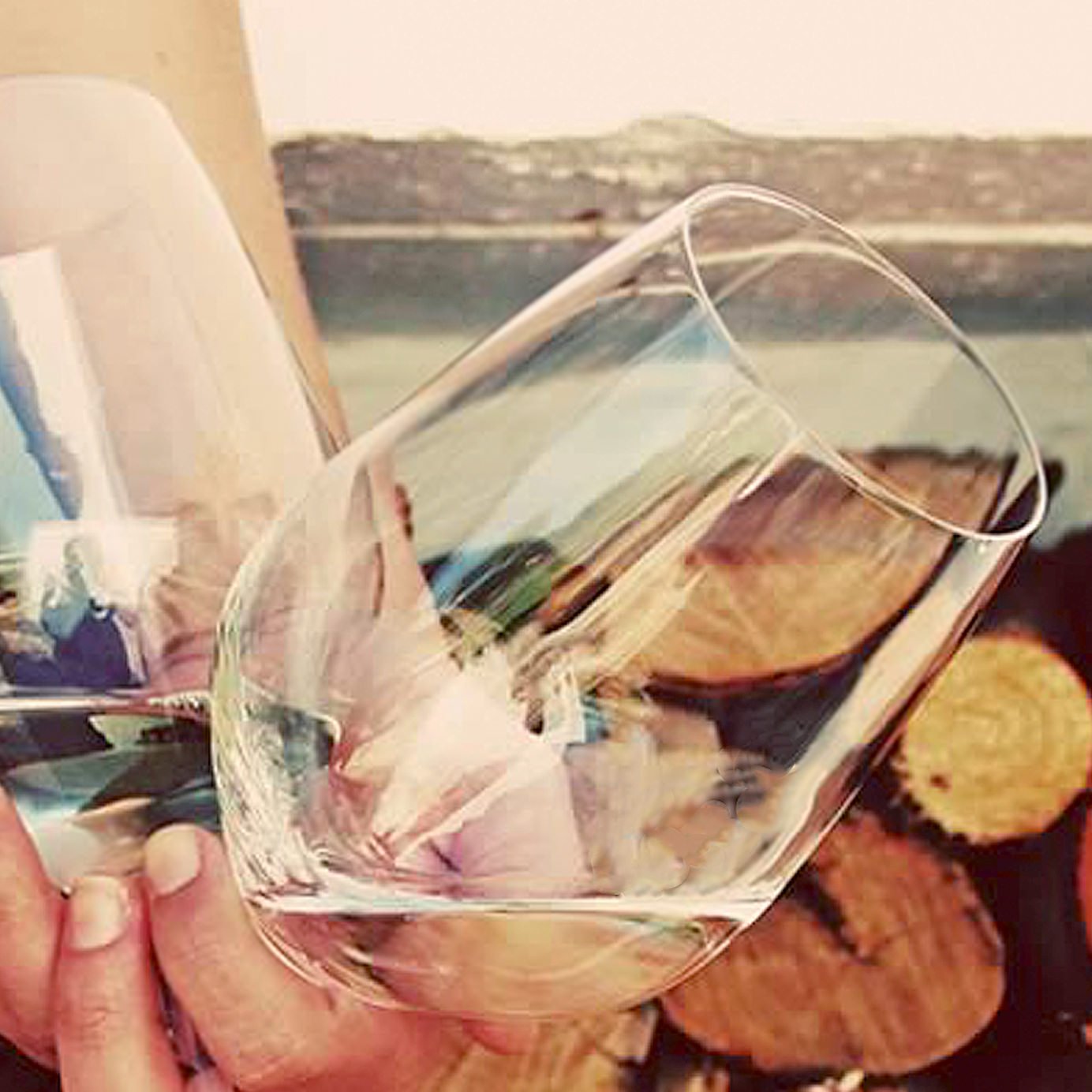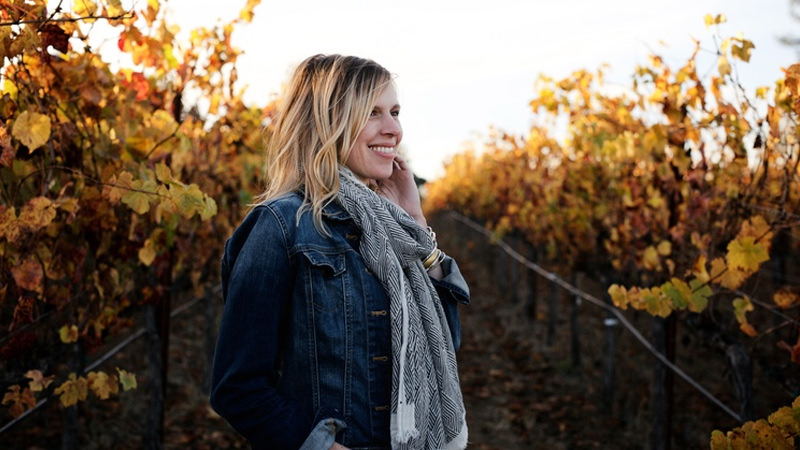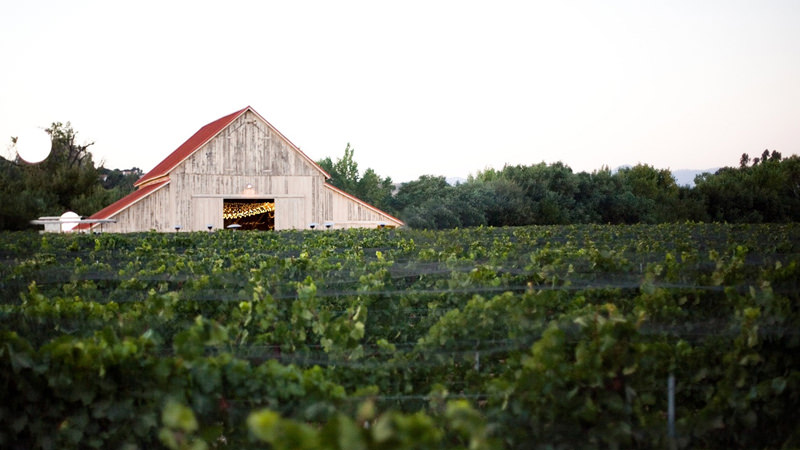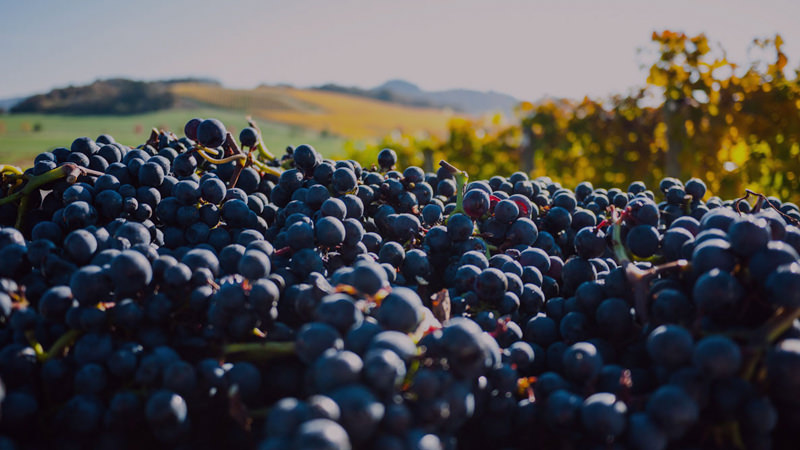Winemaker by day, winemaker by night? For entrepreneurial grape masters, one label isn’t always enough.
Increasingly, wine professionals are launching their own private lines after hours. Free from the restrictions of established management structures or brand identities, these side projects give winemakers the chance to experiment, push boundaries, and, ultimately, create something of their own. A winemaking day job may provide security and expertise, but personal labels offer limitless freedom.
Becky George, winemaker at Napa’s cabernet-centric Kelly Fleming Wines, thinks about Pinot Noir constantly. After working the harvest in Burgundy, she was eager to explore the grape in her native California. She recently launched her own label, Mojave Wines, marrying her deep knowledge of Anderson Valley terroir with her passion for Pinot Noir. She continues to manage production at Kelly Fleming Wines.
The decision wasn’t easy. George toyed with the idea for four years before acting on it, and admits it took a good amount of courage to approach her boss with the idea of making her own cuvées. Now, she joins a growing community of winemakers taking on double, triple, and even quadruple duties juggling established and burgeoning wine labels.
Risky Business
Launching one’s own business always presents challenges, but many winemakers welcome the opportunity to take risks in their personal projects. These side gigs allow them to employ unconventional methods in pursuit of terroir-expressive wines.
South African winemaker Abrie Beeslaar hones in on Pinotage by day, harvesting the indigenous grape from decomposed granite soils at Stellanbosch’s Kanonkop Estate. For his eponymous label, he explores the grape in different ways, working with shale soils. His proprietary label now specializes in site-specific Pinotage production and bottles high-end vintages.
Natural winemaking is also popular among weekend and after-hours winemakers. Despite popular decrees in support of organic and sustainable farming, many major labels view pesticides as necessary tools to meet production and financial goals. In side gigs, however, independent winemakers can lean toward a natural style or lutte raisonée philosophy. Risks are admittedly higher, but working outside of set parameters allows winemakers to spread their wings.
“I have a big responsibility at Left Coast, as with the other wineries I’ve worked at,” said Joe Wright, winemaker at Left Coast Cellars in Oregon. “There’s zero room for error and everything has to be spot on. Every gallon of juice has to find its way into a bottle. With your own brand, you’re the only one besides your customers you need to speak to. Basically it allows me more freedom to be more experimental; a little more reckless, I guess.”
Added Value
Lo-Fi Wines began when co-founder Mike Roth, then at Martian Ranch & Vineyard in Santa Barbara County, received some leftover fruit to play with. He wasn’t planning on making a commercial wine; he just wanted something to drink himself, what he called “glou-glou juice.” But by the time he moved on, he and his partner, Craig, had several cases and, by default, a new line of wines.
Joe Wright released his first personal wine, J. Wright Vintners, in 2009 while working at another winery, but never got a label designed so ended up selling the entire vintage to another winery.
“I had it bottled, under cork, with no label, and they bought the entire production from me. And by the way, those guys got a 92 rating on that freakin’ wine and they didn’t even do anything,” he laughed. He counts 2011 as the first official vintage, the same year he started at Left Coast Cellars.
New Growth
The transition from one employer to another is often an impetus for winemakers to further develop their personal brands. When he left Martian Ranch, Roth realized he could continue to grow Lo-Fi while still working with other existing labels. He approached Coquelicot Estate Vineyard about taking on a winemaking position, noting its style was similar to what he was undertaking with Lo-Fi. Coquelicot’s estate is now his main source for Lo-Fi grapes. The synergy between the two allows Lo-Fi to remain a priority.
His demeanor may seem laid back, but Roth is ambitious. In addition to his day job and side project, he also consults for a friend’s label and is working with Coquelicot’s owners to develop a new line, Rose & Son.
Adam Mason, head winemaker at Mulderbosch, made his first personal wine while working at Klein Constantia in South Africa. He sourced from farmers he knew and used Klein Constantia’s facilities to launch that first project. When he moved to Mulderbosch, he knew that continuing to make his own wines was a high priority. The winery, in turn, offered a partnership.
“They came to the party and said, ‘If you ever want this to work, it has to have scale,’” said Mason. “Overnight, it became much, much bigger.”
Mason’s original brand, Yardstick, spawned additional lines: Marvelous and Raised By Wolves, a natural-style wine newly available in the United States.
“These projects work because I’m seeing growers anyway for Mulderbosch<” Mason said. “So while I’m following up on leads or maturation of vineyards for the Mulderbosch portfolio, I’m doing my own thing at the same time.”
Unlike many startups, which just require a laptop and a vision, winemaking is labor-intensive and requires expensive resources. George and Beeslaar don’t obtain fruit from their employers, but they do utilize the facilities at the winery for production.
“I am totally aware of how much more difficult it would be to do this offsite and I’m very appreciative that I can do it [at Kelly Fleming],” said George.
“Winemakers typically have a rhythm and a heartbeat to their production floor in how the processes flow; when you have a piece of production that doesn’t fall into that stream it’s just disruptive,” said Wright. Supportive owners may charge a reasonable fee, or include the facility use as part of a compensation package, to alleviate the financial burden for winemakers.
Balancing Act
The biggest challenge winemakers face when balancing two brands is time management. Surprisingly, it’s not time in the winery where most feel the pinch.
“I don’t get out enough and do very little marketing for Beeslaar. I am in 12 markets but I haven’t done any trips at this point,” said Beeslaar.
Most winemakers need to act as the marketer and salesperson for their labels. Coupled with the existing promotional work and selling trips they do for their employers, time is stretched mighty thin.
Even back at home, workdays stretch into nights with paperwork, website development, and email blasts.
“Most people who are doing this as a side project don’t have the time to hit the road and sell,” Mason said. “That’s when your employer can get really upset, because you’re competing for time, and a lot of the time it leads to a relationship going soft.”
Regardless, every winemaker I spoke with cites their employer as their first priority.
“If someone hires you to make wine, your loyalties are to them,” said Roth. “It’s a huge investment in the business and you only get once chance. You have to do what’s right for them and what’s right for you. Otherwise you shouldn’t be working for them.”
Soured relationships are not uncommon when employers feel threatened by the perceived time and dedication winemakers devote to side projects. Beeslaar says it’s ridiculous for an owner to be intimidated by two tons of grapes when they harvest thousands; but sadly, it’s a reality. As a result, weekend winemakers advise anyone with a day job to draft clear guidelines and contracts to eliminate any gray areas with their employers. Beeslaar goes so far as to immediately move his wines to a separate facility for aging when production is finished to avoid any confusion.
Other winery owners view these side projects as advantageous. By working on his personal wines, “it energizes me to do the other stuff well, because I’m getting some form of creative expression and outlet with those small batches,” adds Mason. “That’s the benefit Mulderbosch saw; by allowing me to feel my passion for these projects, Mulderbosch gets my full input and giving as much as I can into their projects.”
For Wright, it goes one step further: Left Coast Cellars is in the process of purchasing J.Wright Vintners.
“In essence, they’re buying it over the next 10 years,” Wright said. “What else are they buying? They’re buying a winemaker for 10 years.” Left Coast will use their distribution channels, marketing power, and facilities to build up the brand to a few thousand cases. When the decade closes, Wright will buy the brand back as a majority owner.
“It’s a huge load off,” Wright said. “I’m so vested in [Left Coast], in this property, in this climate that I’m making wine in. This is definitely home. It’s a win win win: a win for Left Coast, a win for me, and a win for my small brand. Hopefully in the next 10 years we can build it up to something I can do whatever I want with.”
As with all agricultural pursuits, winemaking is a difficult business. Wright’s happy ending might not yet be the norm, but it could certainly inspire ambitious winemakers’ new beginnings.



